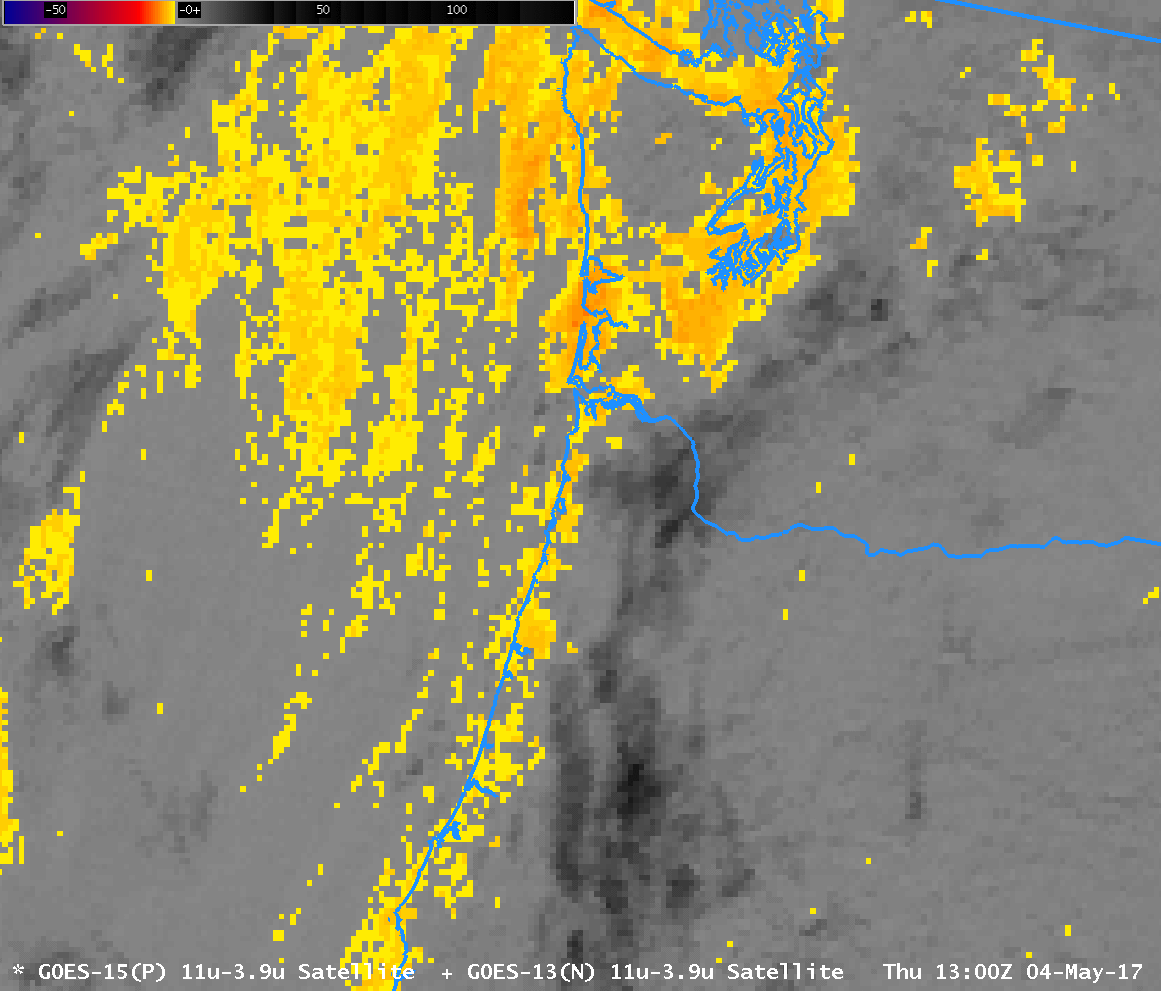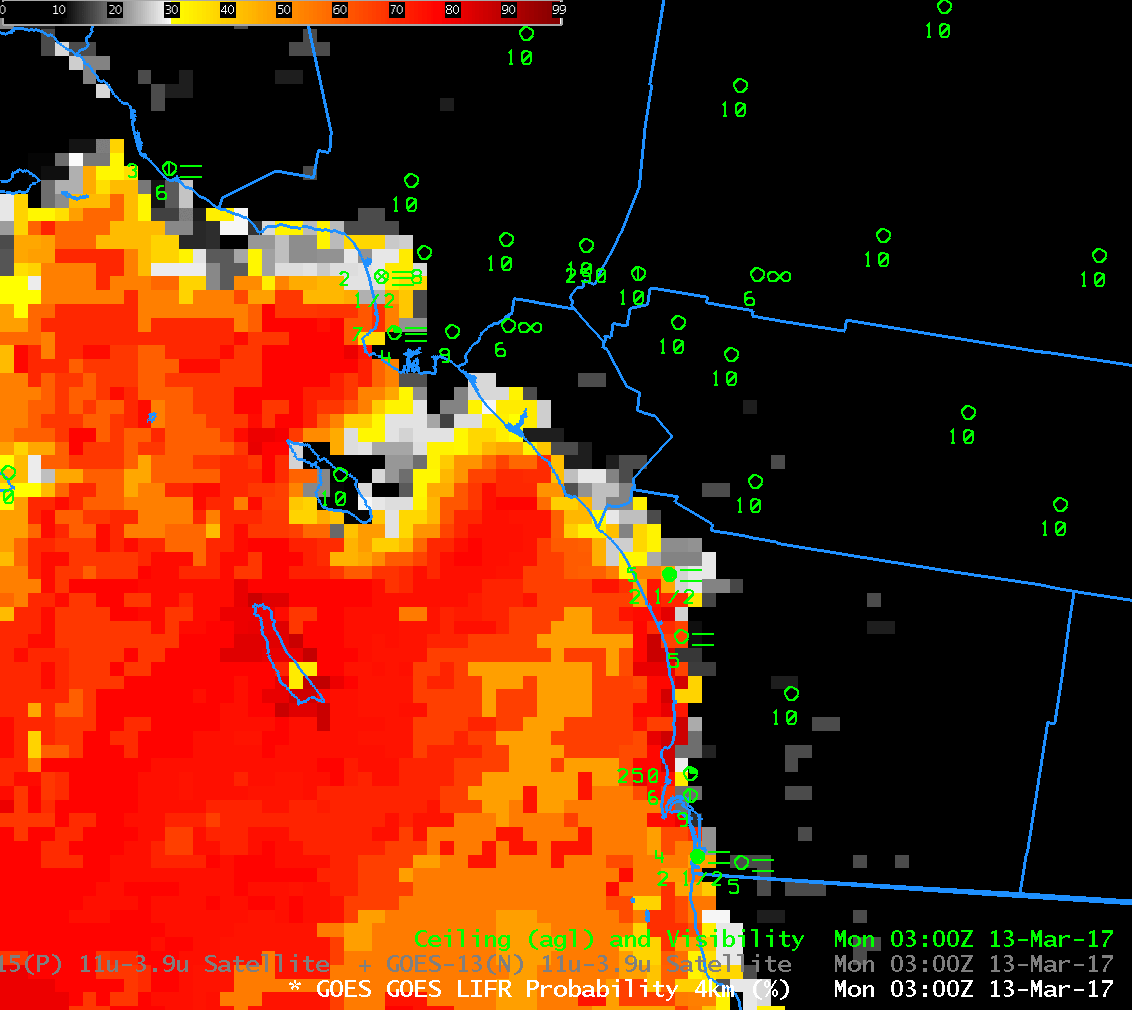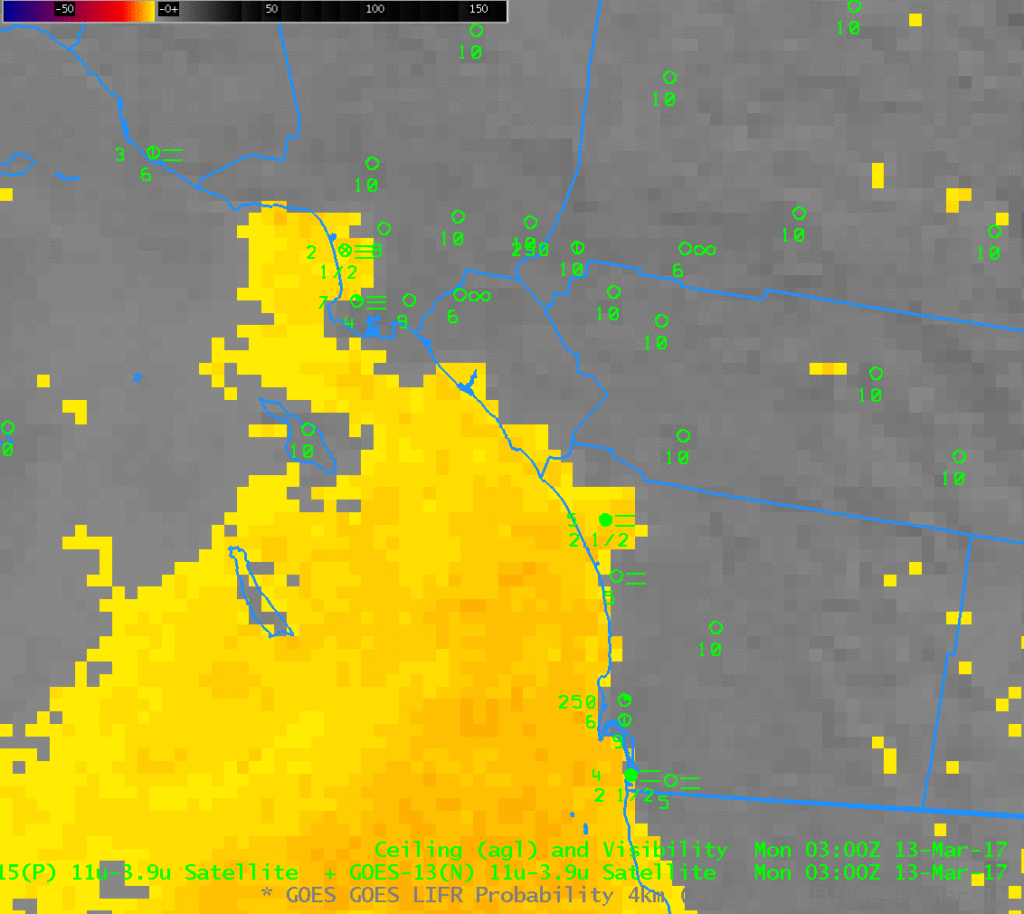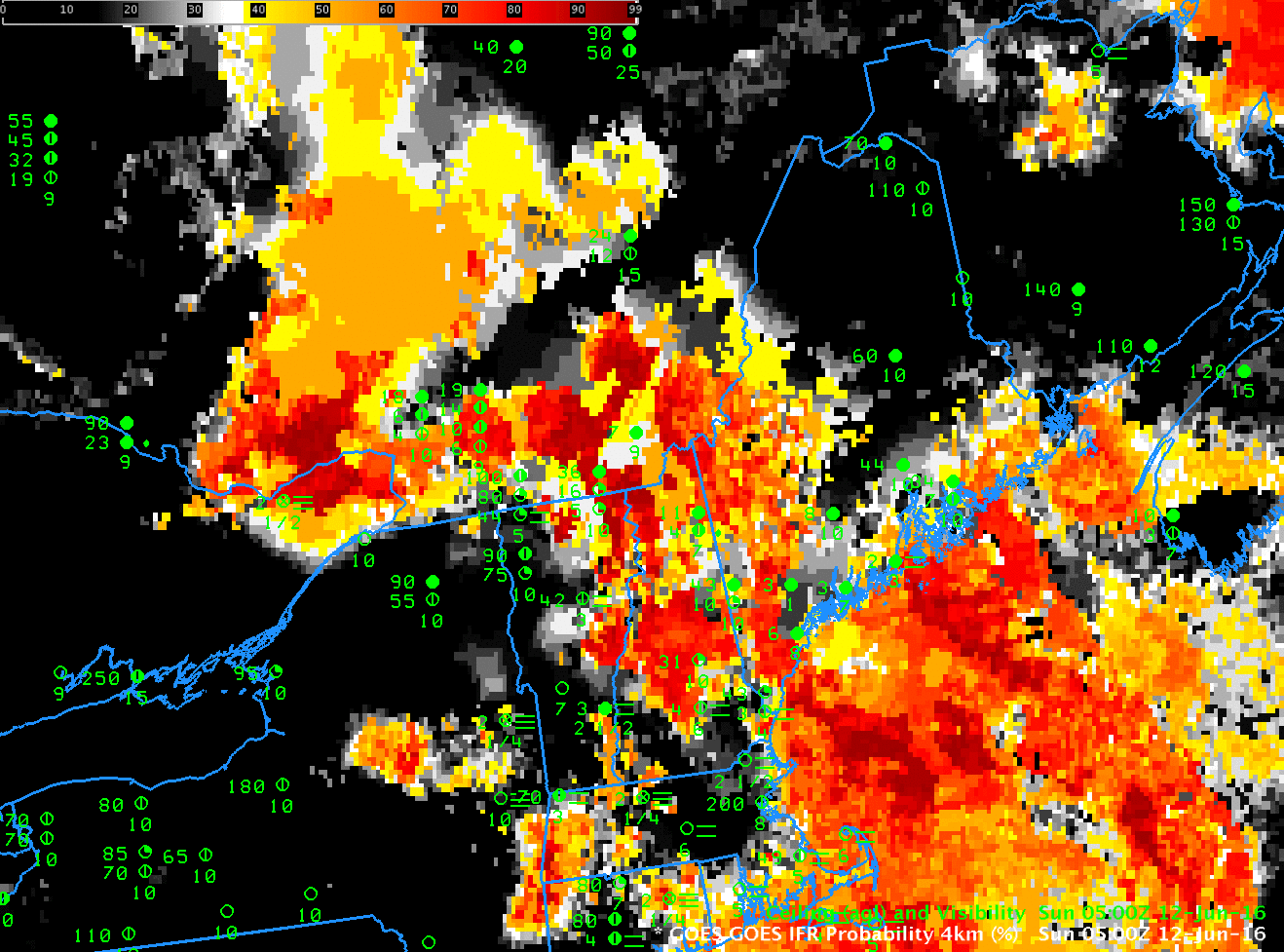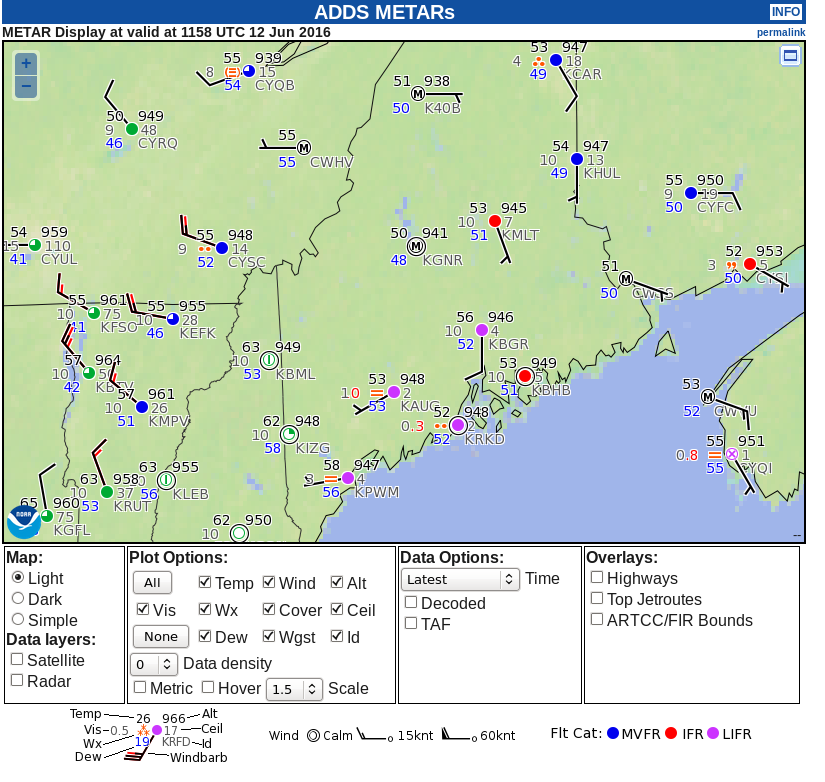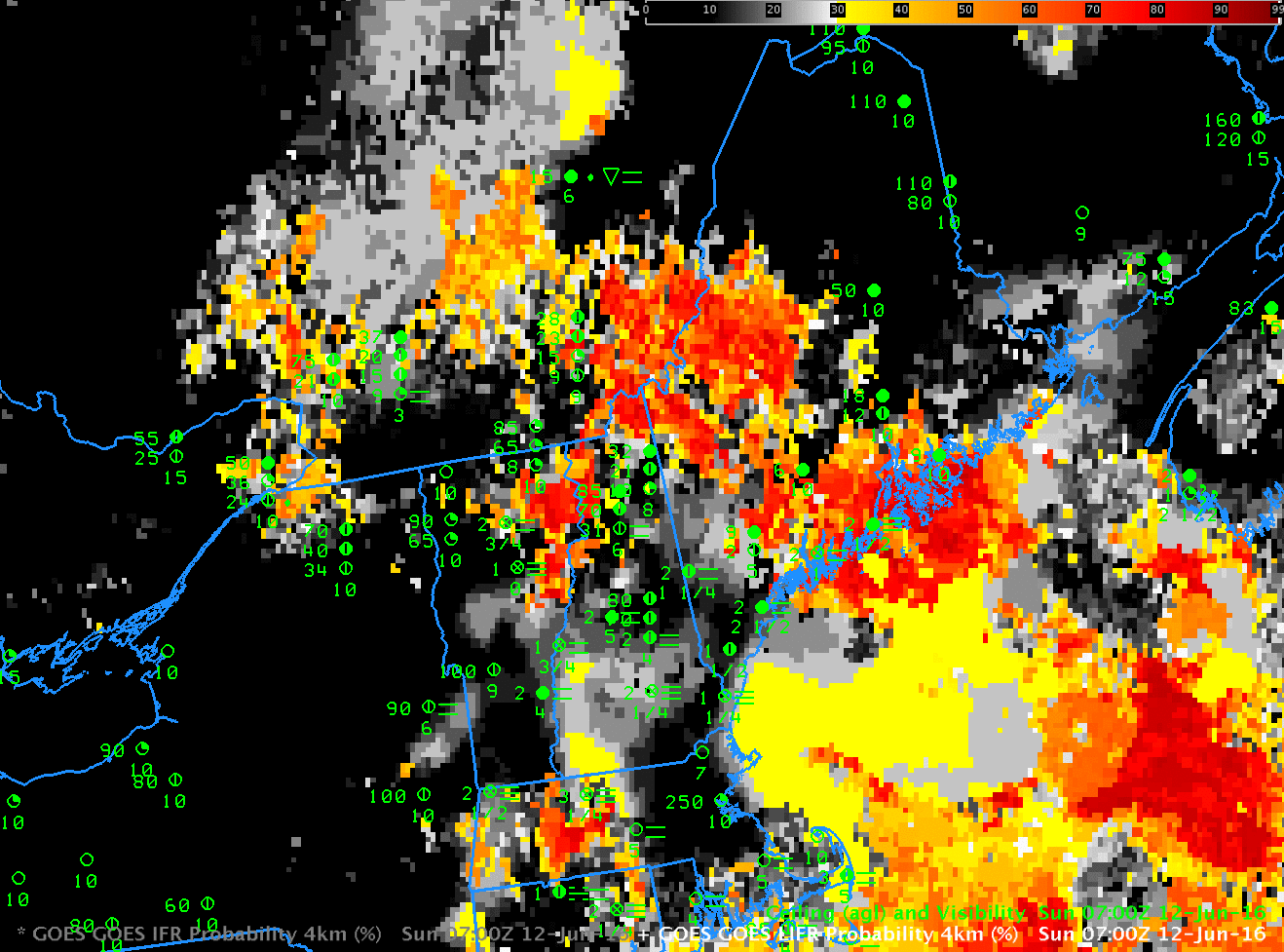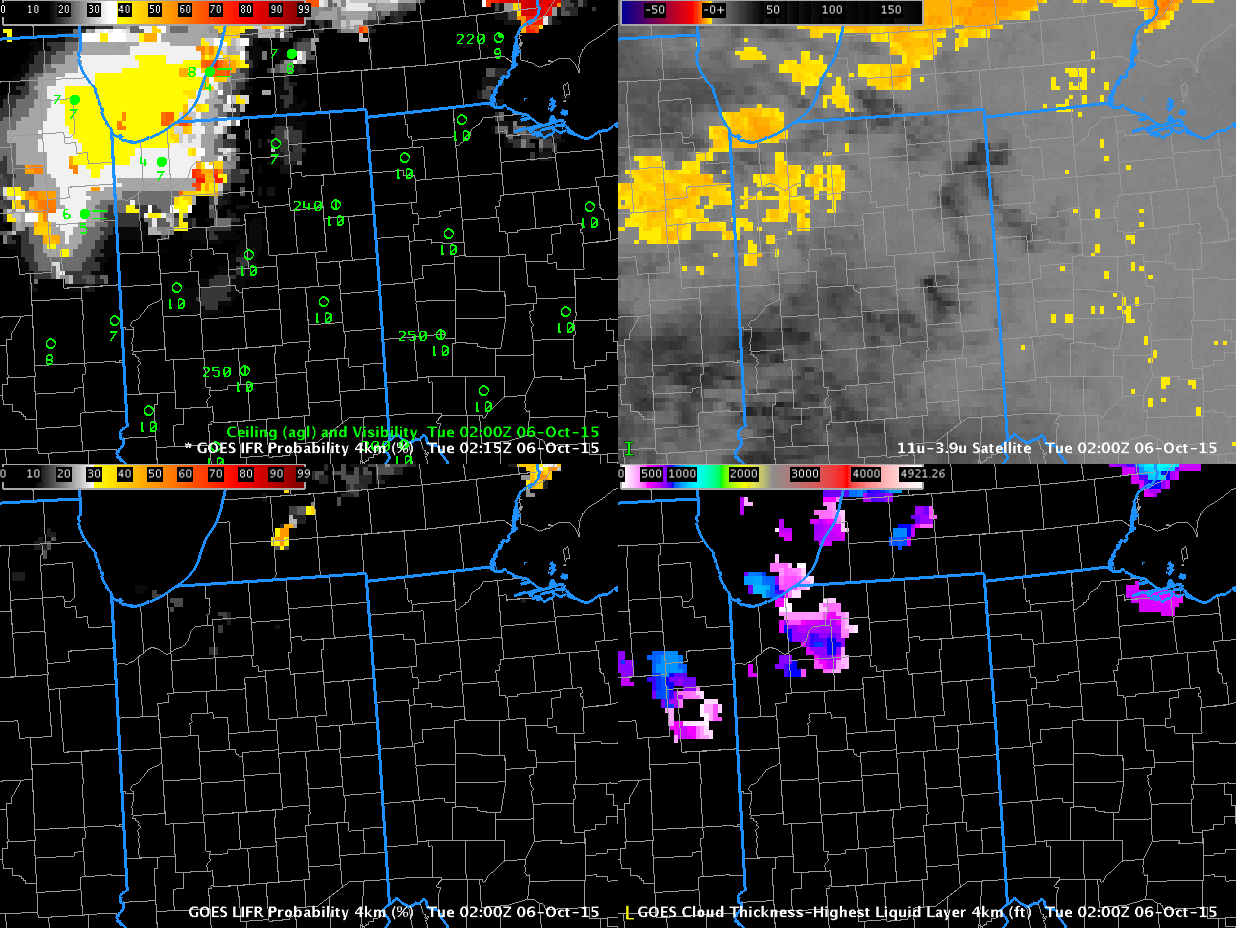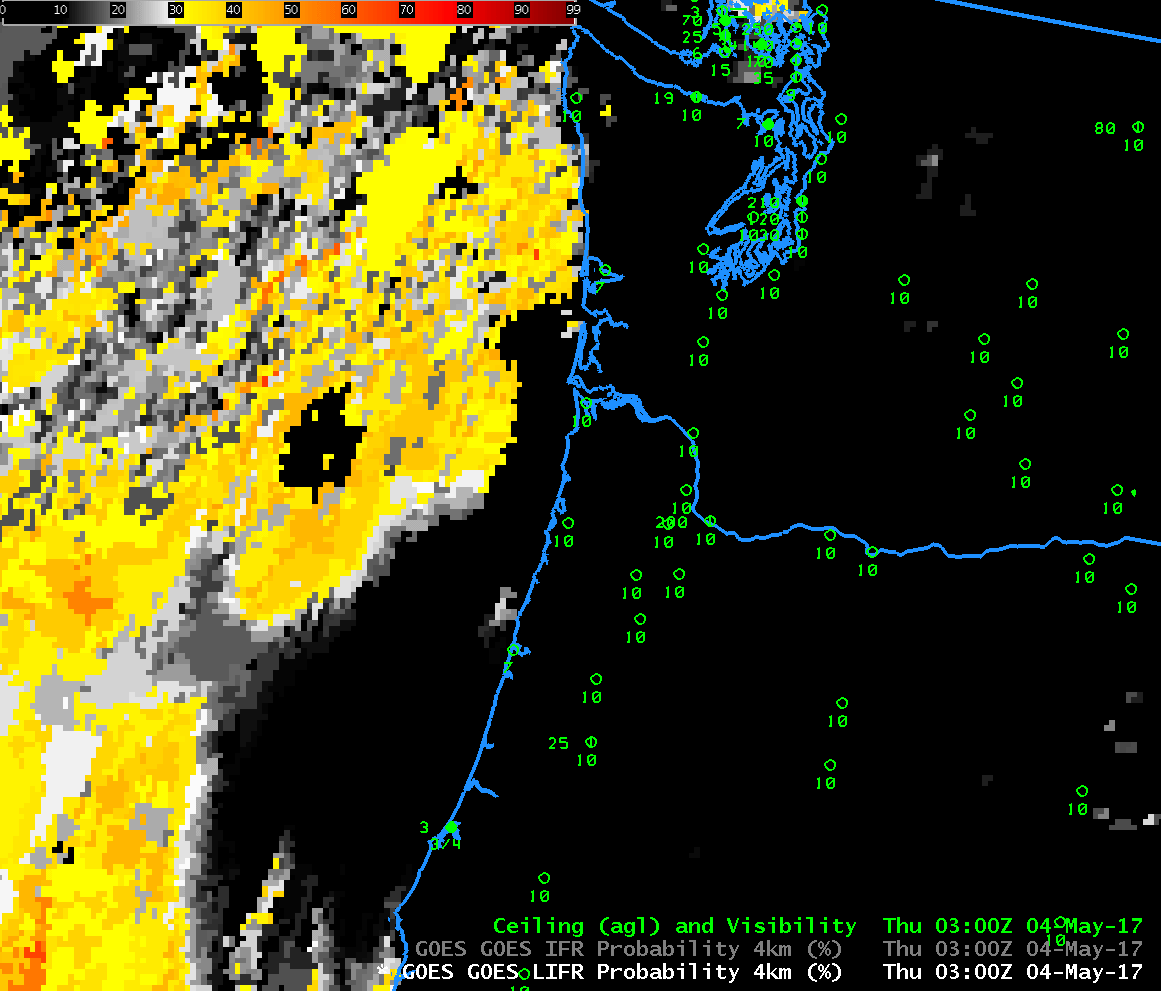
GOES-R Low IFR Probability fields, hourly from 0300 through 1500 UTC on 4 May 2017 (Click to enlarge)
Note: GOES-R IFR Probabilities are computed using Legacy GOES (GOES-13 and GOES-15) and Rapid Refresh model information; GOES-16 data will be incorporated into the IFR Probability algorithm in late 2017.
Dense fog with IFR and Low IFR Conditions occurred along the Oregon and Washington Coasts early on 4 May 2017. The animations above show the evolution of IFR Probability and Low IFR Probability. Note that IFR Conditions/Low IFR Conditions mostly occurred where Probabilities were high, with a few exceptions (KSMP, Stampede Pass, WA; KKLS, Kelso WA at 1400 UTC). Both IFR and Low IFR Probabilities show a general areal increased between 0800 and 0900; this can be traced to a big increase in the brightness temperature difference that occurred between 0845 and 0900 UTC (shown here) that is likely due to stray light intruding into the satellite detectors. (Brightness Temperature Difference values decreased after 0900 UTC — note that the Brightness Temperature Difference enhancement has color starting when ‘counts’ in the image reach -6).
Low IFR Probabilities do a particularly good job above of outlining the regions of visibility and ceiling restrictions along the coasts of Oregon and of Puget Sound. Note also that a strip of missing satellite data exists at 1100 UTC over northern Washington. When satellite data are missing completely, IFR Probabilities are not computed.
A difficulty in using Brightness Temperature Difference fields is shown below. The 1300 and 1400 UTC Brightness Temperature Difference fields show an apparent decrease in low clouds detected as the sun rises (in reality, the amount of reflected 3.9 radiation is increasing as the Sun rises). Fog persists through sunrise as shown in the observations; IFR Probabilities (and Low IFR Probabilities) maintain a signal throughout sunrise.


